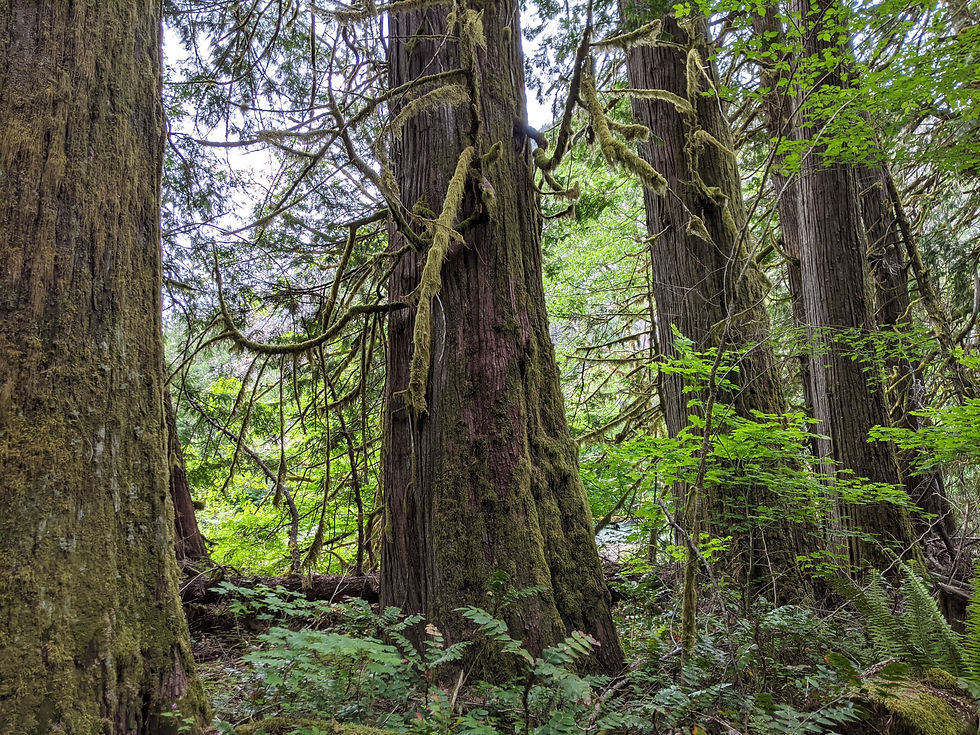Why is Old Growth Important?
- Natasha Zimmers

- Jun 6, 2021
- 2 min read
If you haven't had the pleasure of visiting the northwest coast of North America, you might not know why people are so upset at the logging of our few remaining old growth stands. These forests are more than the enormous, beautiful trees that grow in the lush valley bottoms.

Photo by Natasha Zimmers
Old-growth forest canopies allow sunlight through, creating a lush understory that supports more plants and wildlife. Old-growth forests are made up of trees of all different ages, so the canopy is multi-layered.

Photo by Natasha Zimmers
A tree’s job in the forest is not done when the tree dies. Standing snags are important habitats, as are the fallen trees. They allow for much more biodiversity than in a second-growth forest.

Photo by Natasha Zimmers
These ancient trees grow in a line because they were once seedlings, nurtured by the nurse log that fell on the forest floor.
And of course large woody debris is essential in any water ecosystem, old growth or second growth, providing much needed habitat to keep our salmon population healthy (and so much more).

The epiphyte growth in an old growth forest (lichens, mosses, ferns, fungi etc) is much greater, and supports many more unique species compared to second growth.

Most place I hike in Washington were once old growth. Even my own backyard has old growth stumps in it. There is so little left, we have no sense of what it was once like - what it was meant to be.

Photo by Natasha Zimmers
So when we talk about saving Fairy Creek, it's because there is so little left compared to what there once was. and when it's gone, it might be back in 1000, or 2000 years. Or the ecosystem and biodiversity may be gone forever.

Photo by Natasha Zimmers


Comments